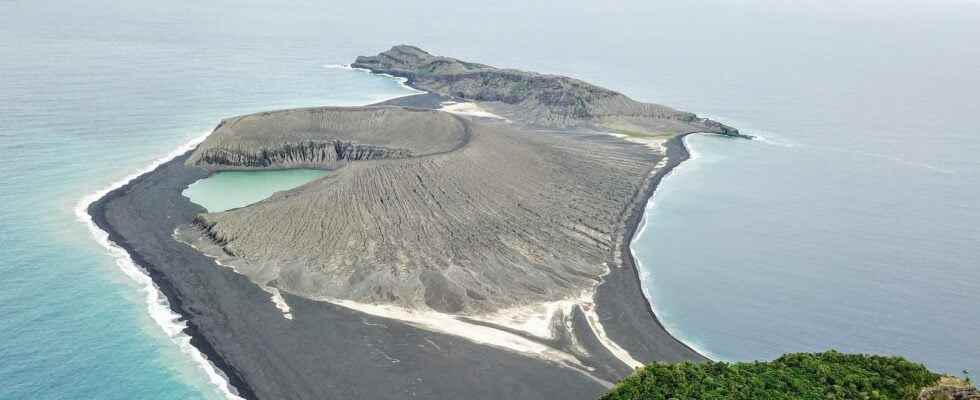Its formidable January 15 eruption attracted attention. But what is this volcano at the origin of the tsunami which propagated in the Pacific Ocean and whose shock wave circled the Earth several times?
You will also be interested
[EN VIDÉO] Interview: the mysterious underwater volcanoes Underwater volcanoes are more numerous than terrestrial volcanoes but they remain poorly understood. Futura-Sciences met Jacques-Marie Bardintzeff, doctor in volcanology, to tell us about these surprising volcanoes.
Resting at approximately 1,800 meters deep on the seabed and with a base 20 kilometers in diameter, this volcano is not the largest volcanic edifice on our planet. In comparison, the volcanic island of Reunion culminates at 3,000 meters above sea level, for a base of just over 200 kilometers in diameter at 4,000 meters deep. The Tongan volcano is therefore incomparable to this seven-kilometre-high mountain which is one of the largest volcanic edifices on our Planet, but the explosion of January 15 attests that the size of a volcano does not in any way affect the power it can generate.
A large summit crater witnessed major eruptions
A crater about five kilometers in diameter caps the summit of the volcano and testifies to a past eruption of great magnitude which would have caused thecollapse of the volcano, thus forming this caldera. Shane Cronin, professor at the University of Auckland and specialist in this volcano, spotted a deposit of ash on the island of Tongatapu which he attributes to this volcano and which could be associated with the formation of this caldera. This event is dated to the year 1100.
Fortunately, not all eruptions from this volcano are of this magnitude. After the formation of the caldera, more modest eruptions thus took place on the edges of this one, the wash taking advantage of the fractures at this level to go up. This constituted prominences in relation to the floor of the caldera which is about 150 meters deep. In addition to two islets to the south, these prominences emerged in two other places before 2015: Hunga Tonga Island to the north and Hunga Ha’Apai Island to the northwest, for a maximum altitude of 114 meters. The 2014-2015 eruption allowed the formation of an isthmus between them, thus uniting these two islands previously separated by about two kilometers into one: Hunga Tonga-Hunga Ha’Apai, hence the name of the volcano.
The eruption that began last December enlarged this isthmus, but the explosions of 14 and January 15 destroyed everything… We will have to wait for bathymetric studies to be sure of what happened, but it is very likely that the caldera subsided again, thus destroying a large part of the prominences built since the last event of this type, explaining at the same time how the tsunami was produced.
Since the January 15 event, there is no longer any remarkable activity at this volcano. This does not necessarily testify to the cessation of the eruption, because following the probable sag of the caldera, the eruptive mouth can now be at greater depth. However, when the pressure of the water column above the vent eruptive is important, it compresses the gas contained in the magma : the eruption is then effusive. This is what happens for the vast majority of underwater eruptions of our Planet, which moreover corresponds to the major part of terrestrial volcanism.
Interested in what you just read?
